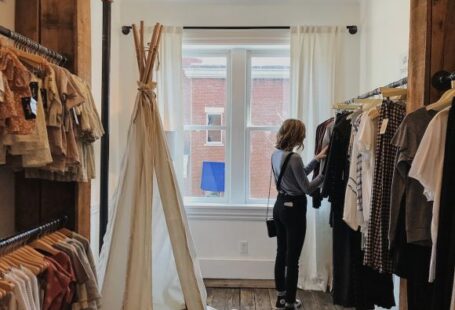In today’s fast-paced consumer society, the fashion industry has become notorious for its negative impact on the environment. From the production of textiles to the disposal of clothing, the fashion industry contributes to pollution, deforestation, and excessive waste. However, there is a growing movement that offers a solution to this problem: clothing exchange. By participating in clothing exchanges, individuals can not only reduce their carbon footprint but also revamp their wardrobe with unique and stylish pieces. Here’s why clothing exchange is the secret to a sustainable closet.
Reviving the Art of Swapping
Clothing exchange brings back the age-old tradition of swapping clothes with friends and family. It allows individuals to trade their gently used garments for something new-to-them. This practice not only adds excitement and variety to one’s wardrobe but also reduces the demand for new clothing, thereby decreasing the strain on the environment.
Promoting Circular Fashion
Circular fashion is an alternative to the linear “take-make-dispose” model that dominates the fashion industry. It aims to create a closed-loop system where clothing items are reused, repaired, and recycled. Clothing exchanges are an integral part of this circular fashion concept. By participating in exchanges, individuals contribute to extending the lifespan of garments and diverting them from landfills. This not only saves valuable resources but also reduces greenhouse gas emissions associated with the production and disposal of clothing.
Fostering Community and Connection
Clothing exchanges provide a unique opportunity to connect with like-minded individuals who share a passion for sustainable fashion. These events often foster a sense of community and camaraderie among participants, encouraging the exchange of ideas and knowledge about sustainable living. Additionally, clothing exchanges can be a platform for local artisans and designers to showcase their work, further promoting sustainable and ethical fashion practices.
Embracing Individual Style
One of the biggest advantages of clothing exchanges is the ability to discover unique and one-of-a-kind pieces. Unlike traditional retail stores, where clothing options can be limited and mass-produced, exchanges offer a treasure trove of pre-loved garments with their own stories to tell. By embracing individual style through clothing exchanges, individuals can create a wardrobe that reflects their personality and values, all while minimizing their impact on the environment.
Saving Money
In addition to being environmentally friendly, clothing exchanges can also save individuals a significant amount of money. Instead of splurging on expensive new clothing items, participants can find high-quality garments at a fraction of the cost. This allows individuals to experiment with their style without breaking the bank. By choosing to exchange instead of purchase, individuals can also redirect their spending towards supporting local businesses and sustainable fashion initiatives.
The Secret to a Sustainable Closet
Clothing exchange offers a simple yet powerful solution to the environmental challenges posed by the fashion industry. By participating in exchanges, individuals can reduce their carbon footprint, promote circular fashion, foster community connections, embrace individual style, and save money. Whether through organized events or informal swaps with friends, clothing exchange is a sustainable and accessible way to revamp your wardrobe. So why not give it a try? Start exploring clothing exchanges in your community, and unlock the secret to a truly sustainable closet.





